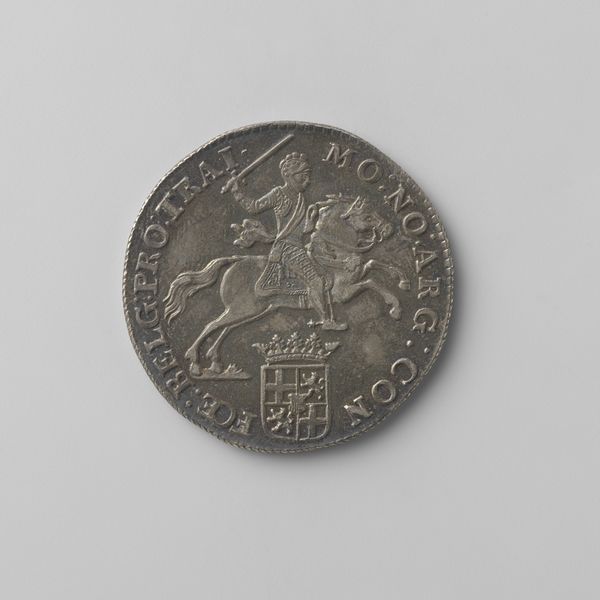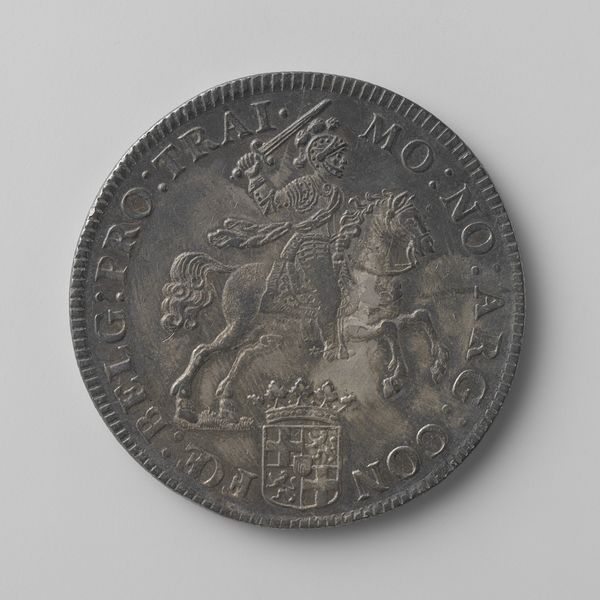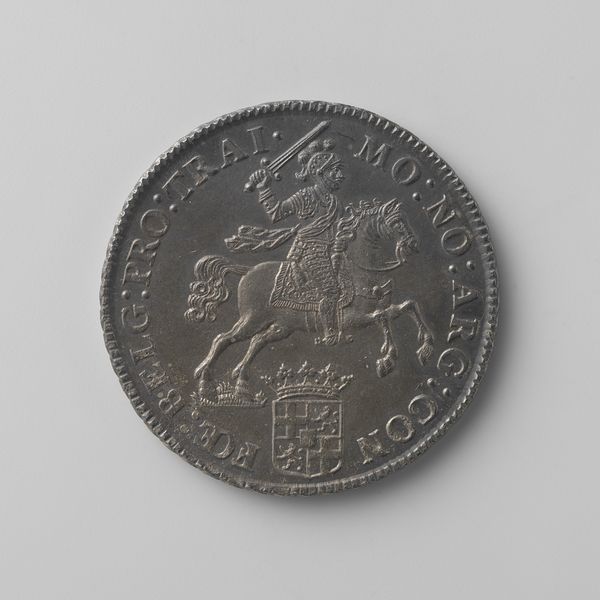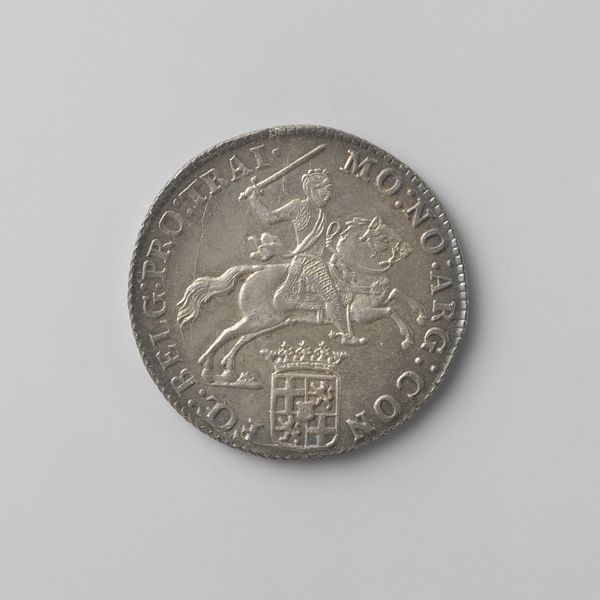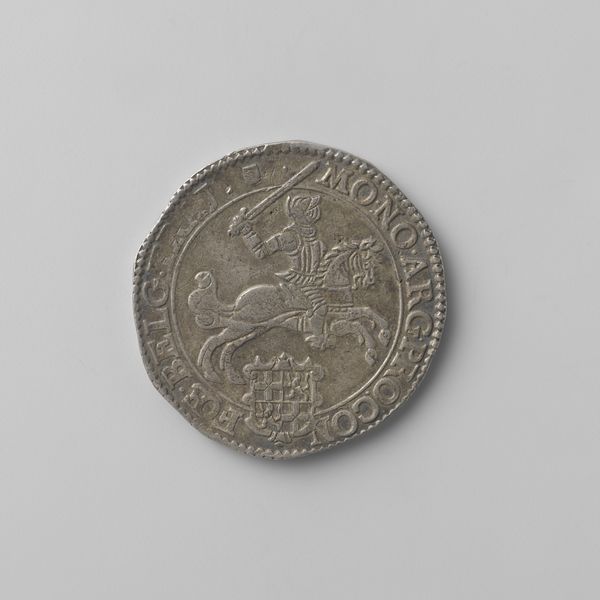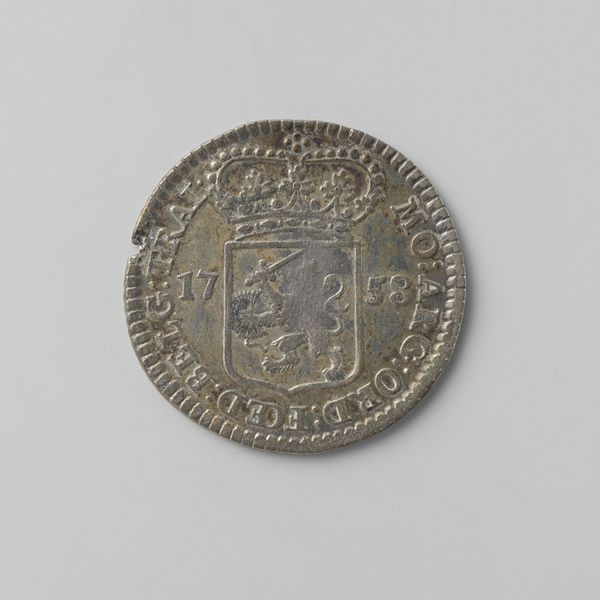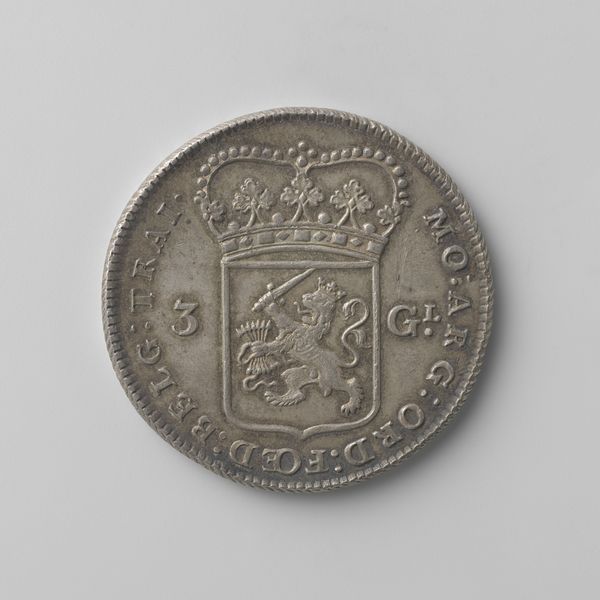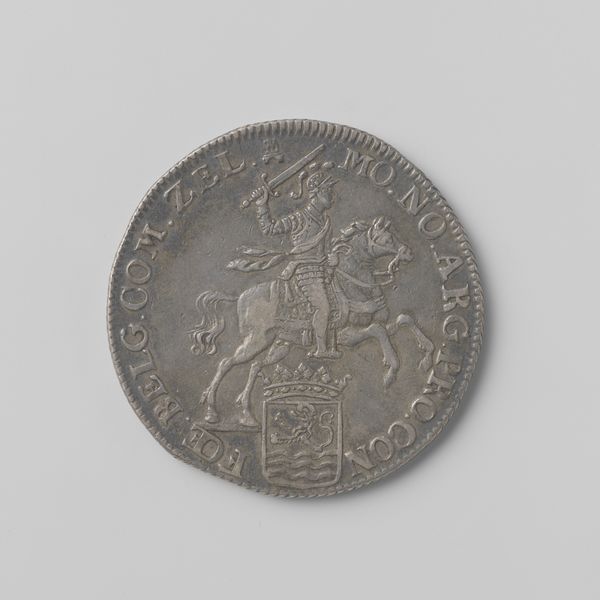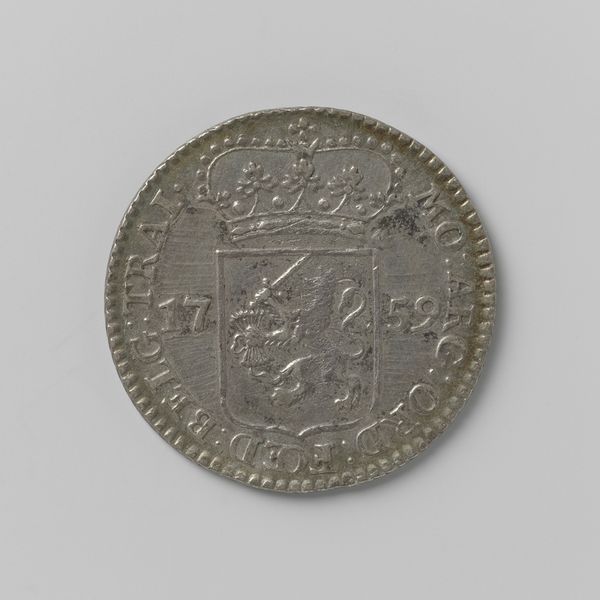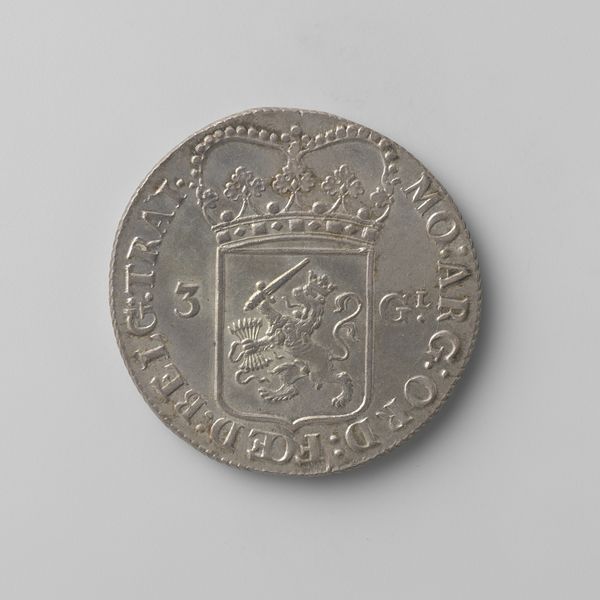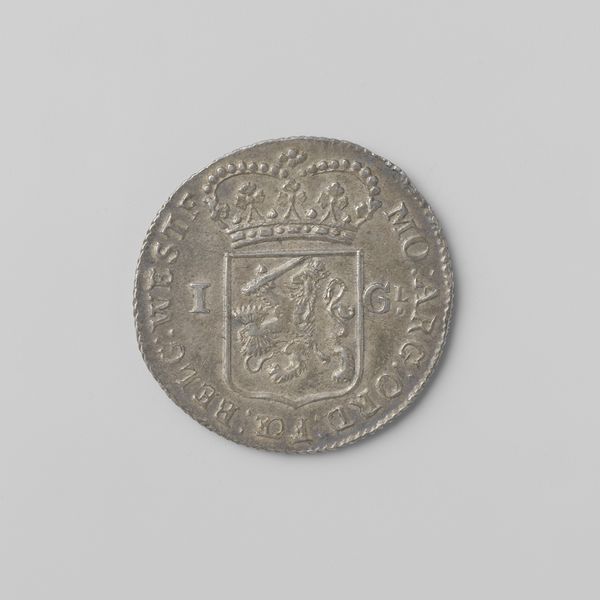
silver, print, engraving
#
portrait
#
neoclacissism
#
silver
# print
#
geometric
#
history-painting
#
coin
#
engraving
#
realism
Dimensions: diameter 3.6 cm, weight 16.16 gr
Copyright: Rijks Museum: Open Domain
Curator: This is an image of the Utrechtse halve zilveren rijder, a silver coin dating back to 1785. It is a striking example of the application of neoclassical aesthetic in a minted form. Editor: The stark monochrome silver lends the image an almost ghostly feel, despite the militaristic equestrian figure dominating the space. It makes you think of ancient symbols but stripped down to their most material state. Curator: The equestrian imagery is deliberately invoking a very specific set of associations. Throughout history, the horseman figure on coinage has often been used to symbolize power, authority, and control, harking back to classical representations of emperors on horseback. What do you make of the sword being held up? Editor: Given that this coin originates from the late 18th century, it’s probably designed to showcase strength during a period of societal upheaval. And thinking of the metal itself—silver in particular has historically signified not only value but its ductility also symbolizes potentiality, the ability to be molded and traded. Curator: Indeed, the coin also includes a heraldic shield beneath the horse, which functions to reinforce the coin’s origin and legitimacy and serves as a clear, recognizable symbol of the Utrecht province itself, as a representation of its history, lineage and belonging. Editor: But consider this, Curator: silver also tarnishes. Like empires and ideas, materiality reminds us of how little control we exert on preservation through time, no matter how robust our systems seem to be. Curator: An important perspective. It speaks to a central concern of iconography: How can a fixed image carry meaning across generations and through social change? And what do people project into it despite the potential for misunderstanding and distortion? Editor: And in turn, from a materialist lens, the question is always: who profits and at what human and ecological cost when a resource, a metal like this, is extracted from earth and fashioned for the purposes of signaling a culture’s values. Curator: Certainly aspects to continue pondering as we turn our attention to the next piece. Editor: Always something more to consider.
Comments
No comments
Be the first to comment and join the conversation on the ultimate creative platform.

